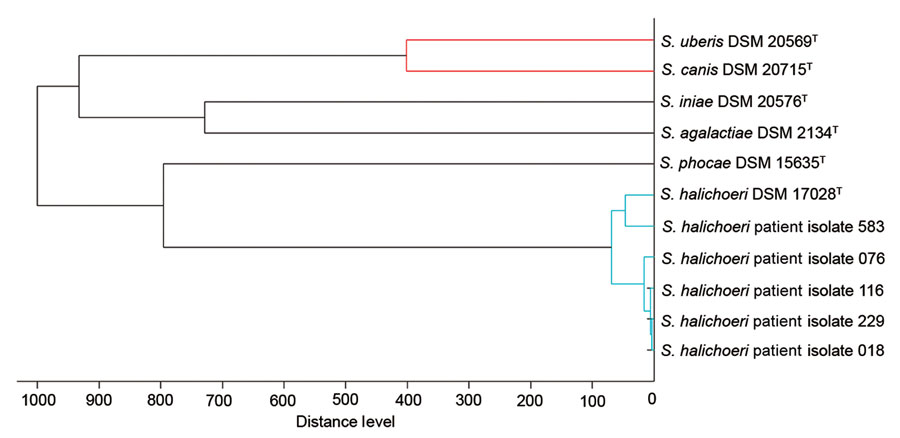Volume 27, Number 5—May 2021
Synopsis
Clinical Laboratory Perspective on Streptococcus halichoeri, an Unusual Nonhemolytic, Lancefield Group B Streptococcus Causing Human Infections
Figure 2

Figure 2. Matrix-assisted laser desorption/ionization time of flight mass spectrometry profile dendrogram of selected pyogenic and zoonotic streptococci from study of human infections caused by unusual strains of Streptococcus halichoeri, United States. We compared main spectra profiles from S. halichoeri isolates to Bruker Biotyper (https://www.bruker.com) database entries from related streptococcal species. Distance level indicates relative similarity of mass spectral profiles. T indicates type strains.
1These authors contributed equally to this article.
Page created: March 15, 2021
Page updated: April 20, 2021
Page reviewed: April 20, 2021
The conclusions, findings, and opinions expressed by authors contributing to this journal do not necessarily reflect the official position of the U.S. Department of Health and Human Services, the Public Health Service, the Centers for Disease Control and Prevention, or the authors' affiliated institutions. Use of trade names is for identification only and does not imply endorsement by any of the groups named above.